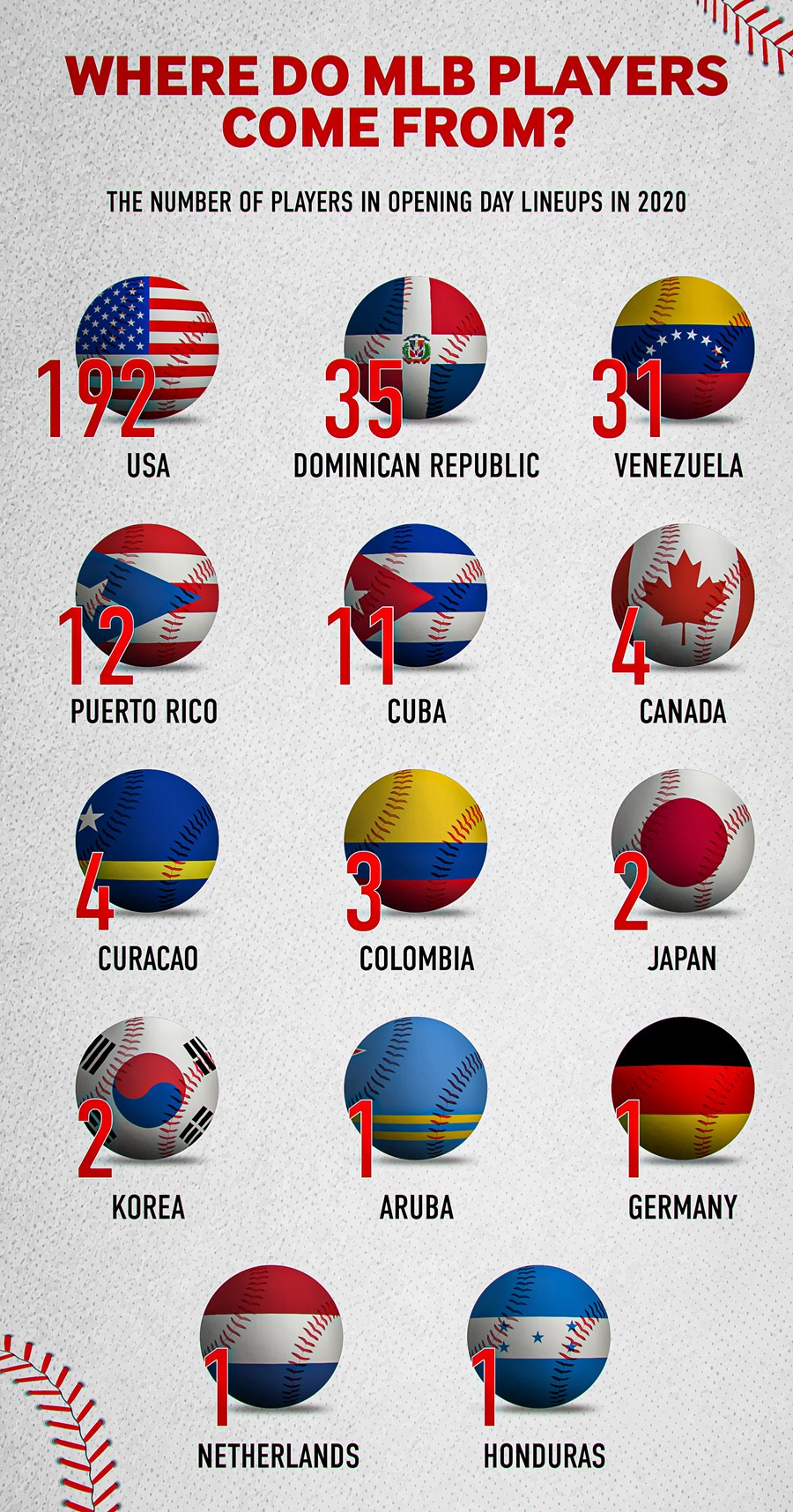
In its 117 years of existence, the MLB witnessed the historical progress and development of Latin American players. It witnessed how Felipe Alou went from being a talented youngster from the Dominican Republic in the 1950s to becoming a manager in the ‘90s, to eventually become one of the most respected persons in the world of baseball.
MLB saw how Venezuelan Luis Aparicio became a pioneer of the modern way of playing of shortstops and how the way of fielding at first base was changed by Puerto Rican Vic Power. It witnessed the crazy pitching style by a windup specialist from Mexico named Fernando Valenzuela in the ‘80s. And it observed the potential that Pedro Martínez had, that skinny man who was born in the Dominican Republic.
The MLB fans smile when they think of Rod Carew and Mariano Rivera, both standouts from Panama, and their eyes widen when the name of Iván Rodríguez from Puerto Rico is mentioned. Don’t even ask them about Juan Marichal because they won’t have enough words to describe the ‘Dominican Dandy’. They could talk for hours about Albert Pujols and Roberto Alomar.
However, there’s one player whose name was frequently mentioned first when MLB surveyed experts to put together the Latin Dream Team – Roberto Clemente.
The explosion of Latino talents in MLB, which started in the mid-50s, can be explained with the breaking of the color barrier of Jackie Robinson. In 1947, he became the first black player to compete in the American major league. That didn’t only spark a revolution for African American players in US sports, but for all players of dark skin color. Before Robinson, the MLB allowed only light-skinned Latino players to play.
The other direction that points to the explosion of the players from Latin America in the MLB is through summing up international milestones – all set by Latin-born players.
The first overseas player to start an All-Star Game was Chico Carrasquel, in 1951. Five years later, the above-mentioned Luis Aparicio was the first international player to be named Rookie of the Year. The following successes of Latin American players occurred in the 1960s. Zoilo Versalles was named first overseas American League MVP, in 1965, while Mike Cuellar won the American League Cy Young Award in 1969.
That all happened before Roberto Clemente became the first foreign player to win the World Series MVP Award in 1971. Two years later, he entered MLB history as the first overseas player inducted into the Hall of Fame. Back in 2012, Carlos Correa was selected as No.1 pick on the draft, becoming the first foreigner to make it to such a high selection.
In the last 40 years, the number of Latin players in MLB is on the constant rise. From the ‘80s, Dominicans dominate in ‘populating’ the MLB, more and more by each decade. For example, Venezuelans had the biggest leap in representatives in the last 20 years while, in the same period, Puerto Ricans had the biggest drop of its players in the MLB. The number of Cuban has had its ups and downs since 1980 before it boomed in the last decade.
In fact, there are so many names of Latino players who have contributed to this sport from which two or three stellar teams could be put together, which says it all about what the rich contribution of the players from this part of the world has been through the MLB history and what they have added to the world of baseball. So many great names that have meant a lot to so many people.
All the members of any of the Latin Ideal Teams or Hall of Fame have two things in common: They are among the best players ever to enter the MLB fields and they are proud of their roots, whether they are stars born in the United States, like Alex Rodríguez, Reggie Jackson and Ted Williams, or born in the Caribbean or other Latin American region. There’s no doubt that these men are baseball legends and relevant figures of this sport around the globe.







